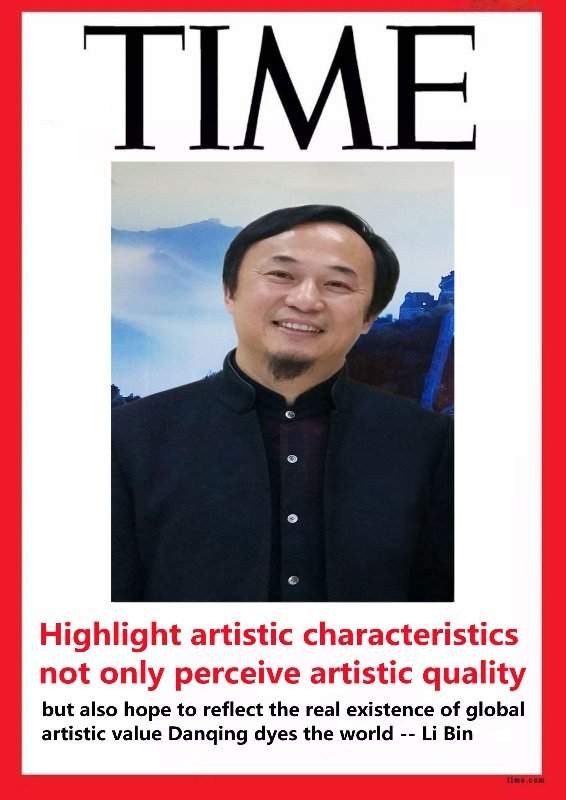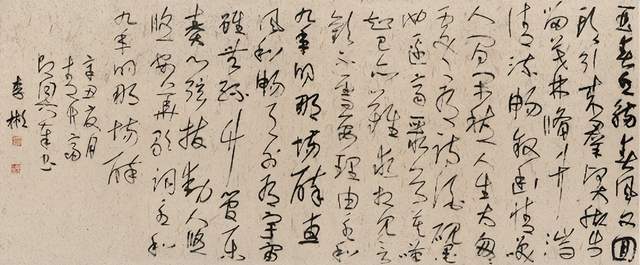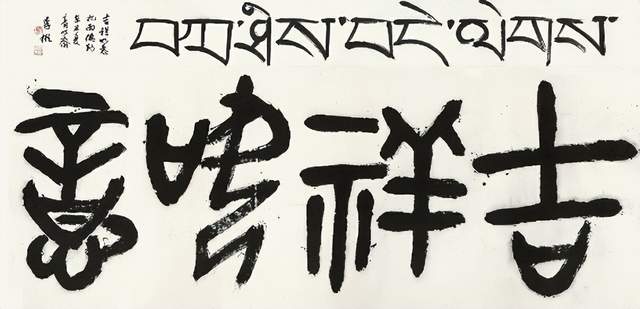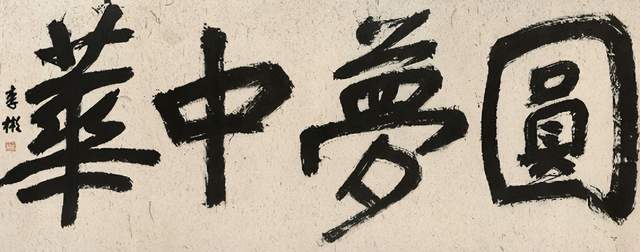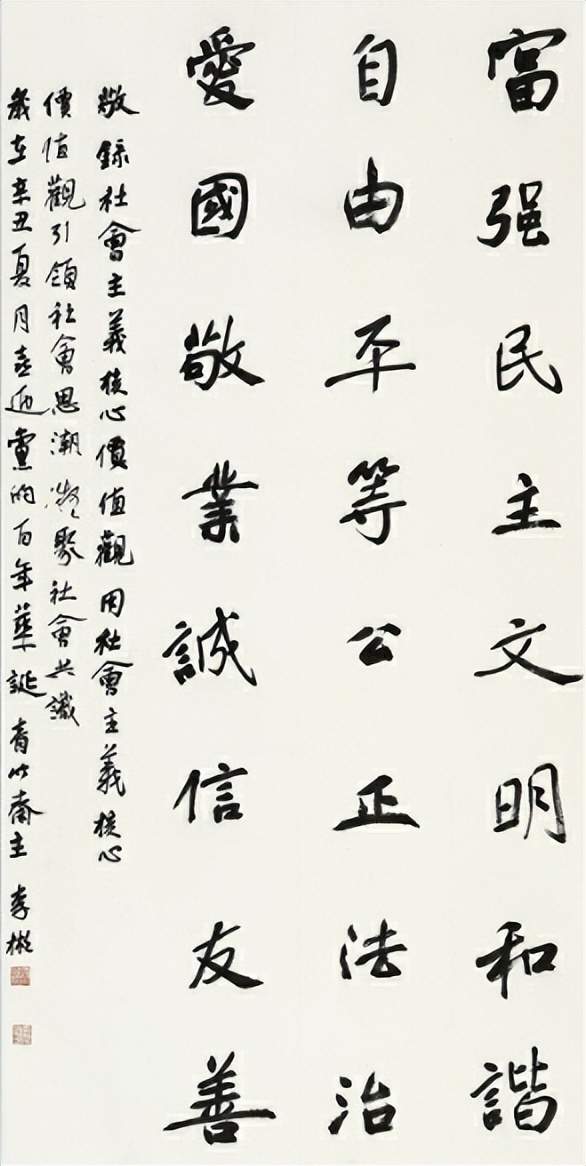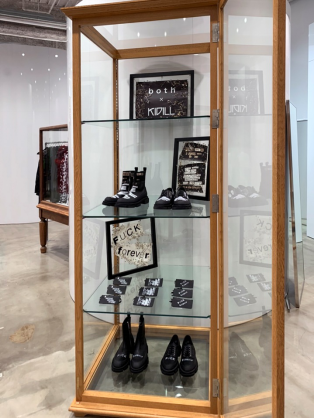Bing Lin, born in 1965, native of Anhui, is the master of Qingzhuzhai and has a postgraduate degree.
Department: Director of Chinese Calligraphers Association, Professor of Training Center of Chinese Calligraphers Association, Vice Chairman of Tibet Autonomous Region Calligraphers Association, and Distinguished Professor of Calligraphy in many universities.
He began to learn to write calligraphy in 1972, taking his father's handwritten Chinese medicine classics and Liu Gongquan's Xuanmi Tower as models. In 2005, he was named as one of the top 100 young calligraphers in the first "Top 100 List" of Chinese calligraphy circles and one of the "Top Ten" young calligraphers in Anhui Province. "Calligraphy Newspaper" in 2006, the first "Lanting Scholars" award-winning calligrapher. He has participated in major exhibitions sponsored by China Book Association for more than 20 times and won awards.
Since 2002, he has commented on correspondence teaching for the students of Calligraphy Education and Seminar in the Training Center of China Book Association; Since 2006, he has made teaching comments for Calligraphy Newspaper and Calligraphy and Painting World; Since 2007, he has been an assistant professor of the second calligraphy postgraduate class of Peking University, an associate researcher of the Calligraphy Research Institute of Peking University since 2009, and a tutor of the third, fourth, first and second calligraphy elite classes of Peking University.
It has been recommended by the special editions of Calligraphy Newspaper, Painting and Calligraphy World, Contemporary Famous Artists and People. In 2019, it was rated as "70 Calligraphers in 70 Years" and "Twelve Cursive Scripts" by Calligraphy Newspaper Painting and Calligraphy World, and was specially recommended.
He has published many calligraphy collections, such as Selected Works of Bing Lin Calligraphy, Selected Works of Peking University Calligraphy Postgraduates-Li Binjuan, Calligraphy Works of Peking University Scholars-Li Binjuan, Works of Rong Baozhai Calligraphy Nomination Exhibition, Works of Zhang Xuequn Wei Siqin Bing Lin Calligraphy Exhibition, etc. He has held calligraphy exhibitions in Gansu Provincial Art Museum, Beijing Rong Baozhai Art Museum and Tibet Natural Science Museum. His works have been collected by many institutions at home and abroad such as the Great Hall of the People.
Literati Feelings and Social Responsibility of Calligraphers--Review of Bing Lin Donation Public Welfare Exhibition
-Fu Defeng
2021 is a special year with great historical significance. In this year, people warmly celebrate the 100th anniversary of the founding of the Communist Party of China in different ways. On August 29th, in Lhasa, Tibet, calligrapher Bing Lin held the "Public Welfare Exhibition of Calligraphy Works Donated by Bing Lin to Tibet Art Museum". Once this exhibition was launched, it attracted great attention and unanimous praise from calligraphy circles and even the whole society. Bing Lin, a calligrapher who is a Communist Party member, presented a grand gift for the birthday of the Party in this special form with a hot sincere heart, strong literati feelings and a high sense of social responsibility. This donation exhibition in Bing Lin has not only been highly valued by relevant parties in Tibet, but also won full recognition and praise from the Chinese Book Association, calligraphers and calligraphy lovers.
It is obvious to all that Mr. Bing Lin has been very active in contemporary book circles. Because we are about the same age and he is a little older than me, I usually call him Lin Binxiong. In my impression, Li Binxiong's calligraphy struggle has gone through three stages: Anhui period, Beijing period and Tibet period. The first stage, in Anhui, his hometown, was the stage of his growth and study. With his sincere love for calligraphy art, he laid a certain calligraphy foundation for himself. The second stage, after he moved to Beijing, was a period of great promotion in calligraphy, and it was also a period of rapid rise and continuous soaring. Because of the special cultural atmosphere in Beijing, the capital, and various convenient conditions such as finding teachers and visiting friends, he made a qualitative leap in calligraphy study and research. At this stage, through hard work, not only his calligraphy level is constantly improving, but also his personal popularity and recognition in calligraphy circles have undergone major changes by holding personal exhibitions, participating in joint exhibitions, national exhibitions and holding calligraphy lectures. Therefore, today, as long as Lin Binxiong is mentioned, people are familiar with it and will not feel strange at all. In the third stage, that is, in recent years, he joined the team supporting the construction of Tibetan cultural undertakings, became one of the backbone forces and leaders of Tibetan calligraphy undertakings, and devoted himself to working life and artistic creation with a brand-new attitude. It can be said that this period is a special period in which he is based on calligraphy and constantly gives back to the society after learning something. He not only donated more than 100 calligraphy works carefully created by himself to Tibet Art Museum, Moreover, he created a large number of calligraphy works for troops, schools, enterprises and other units free of charge, and shared his artistic achievements with everyone. What he gained was not only the happiness of writing, but also the feelings and responsibilities that an excellent calligrapher and Communist Party member should have.
My association with Brother Lin can be traced back to more than ten years ago. At that time, he had moved to Beijing and made remarkable achievements in calligraphy, which attracted wide attention from colleagues in the calligraphy field. At that time, I should have written a commentary for him entitled "Courage and Wisdom of Drifting North-My View on Bing Lin's Art", commenting on his study, work, living conditions and calligraphy achievements at that time. In 2020, when COVID-19 pandemic flooded, Lin Binxiong carefully created a batch of anti-epidemic calligraphy works and sent them to me for reading. At the same time, he told me to write some words. I gladly wrote an article entitled "Refinement and Sublimation of Art-Let's Say Lin Bin's Book", affirming his artistic achievements ten years later. In the past two years, he has done so many meaningful things unexpectedly and reasonably in Tibet, which once again aroused my interest in writing about him.
I have talked a lot about Lin Binxiong's calligraphy itself. But in today's article, I can't help but say a few more words. Lin Binzhi's calligraphy belongs to the type of all-round cut-in and all-style learning. This way of learning books has advantages and disadvantages, but the key lies in their own aspirations, efforts, talents, and wisdom of trade-offs and mutual integration. Some people, even if they are specialized in learning, may not be able to learn well. Some people learn more than one body, but the effect is often unsatisfactory. However, Bing Lin can really learn all the styles of Cao Li Zhuan, and all the styles can reach an ideal level, which is really not easy. Among the various styles, the most outstanding ones are his cursive script, official script and regular script (including lower case and Wei Kai). Of course, his seal script is also very good.
Bing Lin's cursive writing is rooted in the two kings, especially deeply influenced by Wang Xizhi's letters and letters, and pursues an artistic realm of elegance, clarity, health and hearty. As a matter of fact, he has made some in-depth efforts on the works of all the cursive scripts since Wei and Jin Dynasties except the two kings, instead of being confined to a certain post. However, he is good at making trade-offs intelligently, and can get the artistic nourishment he needs from different inscriptions. From his cursive works, we can not only see the charm of Jin and Tang Dynasties, but also see some shadows of Song and Yuan and Ming Dynasties. You can see two kings, Yan Zhenqing, Huai Su and Sun Guoting, as well as Huang Tingjian and Dong Qichang. However, you will clearly feel that he does not stick to any one, but takes a certain proportion of each one, which combines his own understanding and aesthetic interest. Be eclectic, learn from others, be good at understanding, and not stick to the law. Not eager for quick success and instant benefit. Only in this way can we really make achievements in calligraphy. Bing Lin's books are roughly similar to this.
This time, I saw some new changes from many of his cursive works, and felt that the lines were more concise and simple. The high ancient and light of Lu Ji's Ping Fu Tie and the cold and peaceful feeling of Badashan people all overflowed between the lines, and the poetic style came to me, which was even more intriguing. His official script is mainly based on Zhang Qianbei and Ode to Shimen, which also combines some brushwork of Chinese bamboo slips, paying attention to writing and reflecting the interest of writing. Simple and vigorous, there is no lack of agility in silence. I have seen a lot of the big seal script written by him this time, which has reached a high artistic level. Whether it is Oracle bones or inscriptions on bronze, or whether it is small-print nave or large-character couplets, it is simple and natural, stretching the atmosphere, clever in clumsiness, soft in rigidity, and a school of muddy and harmonious, which is in sharp contrast with many cursive works. His regular script, from lower case to big character Wei Kai, has its own origin, which not only shows traditional skills, but also reflects self-aesthetic taste. Motion and static are suitable, and each is wonderful.
For decades, he has persevered, loved it, did not fall into the stereotype, dared to explore, and constantly surpassed himself, which is the good quality that an excellent calligrapher should possess.
In fact, as early as more than ten years ago, Bing Lin had already set himself the goal and main direction of learning books, that is, studying cursive, bypassing seal script, and covering lower case and second book. His talent, hard work and ability to deal with people made him stand out in the book world more than ten years ago and become well known to people. Later, his constant precipitation and perseverance made him go through a process of continuous refinement and sublimation in art and life. We often say that when we were young, we used addition, hoping to learn more things and involve more fields. When you reach a certain age, you will switch to subtraction, eliminate many superficial and flashy things, and focus more on profound aspects. The so-called wash away the lead, the original. Judging from this batch of newly created works in Bing Lin, it is obvious that they are more mature and sophisticated than their previous works. Besides being more technical, they are also different from the past in spirit and weather. In addition to continuing to maintain the existing vigorous and unrestrained characteristics, it has a muddy and steady temperament, which is also contributed by the accumulation of artistic skills and life experience with the increase of age.
Some of his works are voluminous, poetic, gloomy and Sandy, not exciting, and natural. There is not only a sense of form, but also a visual impact. More importantly, there is a connotation that makes people read it carefully. The so-called "all people and books are old" means that when people reach the old age, they will no longer show off their skills, be restrained and show no edge. Just like a pot of old wine, it seems dull, but in fact, the more it tastes, the more mellow it tastes. Just as when you were young, you saw mountains as mountains and water as water; In middle age, seeing mountains is not mountains, and seeing water is not water; In old age, we look at mountains or mountains and water or water. Different ages, experiences, knowledge and self-cultivation determine the level of cognition and ideological realm. I'm not saying that Bing Lin has reached the state of "all people and books are old", but that he has made great progress on the original basis and achieved self-transcendence in stages. This is quite different from those who are used to eating old books and writing worse and worse.
Therefore, many changes have taken place in Lin Binxiong in recent years. This change is not only the change of age and identity, but also the change of working and living conditions, not only the change of calligraphy creation, but also the promotion of its ideological realm, and a brand-new understanding and change of the responsibility of the times and the sense of social mission.
"I hope that all the people are warm and take pains to get out of the mountains." A person engaged in artistic work and a calligrapher can be regarded as a true cultural person when he closely links his own destiny with the common destiny of his motherland and people. When he changed his own destiny with his skill under the care of the society, and knew how to be grateful to the society and repay the society, this person could really be regarded as waving his own pen like a rafter and writing a capital "person" on the land of China. Bing Lin just proved this point with his practical actions. Therefore, as a fellow friend who has met for many years, I should not only praise him, but also give him more and higher expectations and blessings for his future.
Fu Defeng, Sunday, January 30, 2022, Mr. Zui Mo was under the north window of Gufeng Hall

